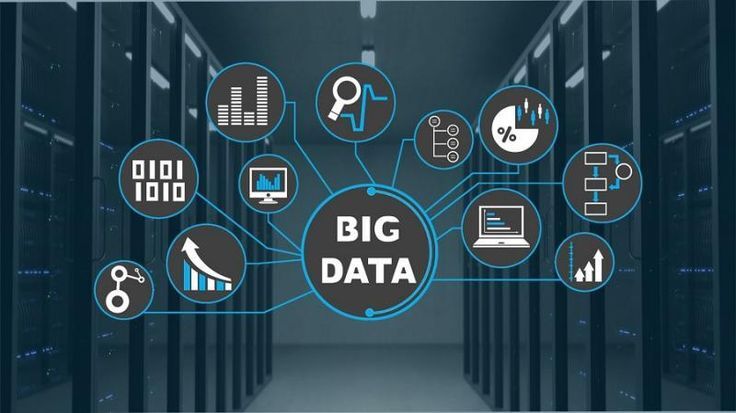Exploring the Future of Big Data Analytics: Trends and Innovations
 Brijesh Prajapati
Brijesh Prajapati
In today’s fast-evolving technological landscape, big data analytics stands at the forefront, reshaping industries and driving innovation. As organizations generate and collect vast quantities of data, the demand for advanced analytics to extract actionable insights has never been more critical. This article explores the future of big data analytics, highlighting emerging trends and innovations shaping its trajectory.
The Evolution of Big Data Analytics
Big data analytics has advanced significantly since its inception. Initially focused on basic data processing, the field now encompasses sophisticated algorithms and tools capable of managing complex datasets. This progress is driven by the exponential increase in data volume and the growing need for more nuanced insights.
Key Trends Shaping the Future
1. Artificial Intelligence and Machine Learning Integration
Artificial Intelligence (AI) and Machine Learning (ML) are transforming big data analytics by enhancing data processing capabilities. AI-driven tools can now identify patterns and trends with unprecedented accuracy. ML algorithms learn from data and make predictions or decisions autonomously. This integration enables more precise forecasts and personalized recommendations, improving decision-making across various sectors.
2. Real-Time Data Analytics
As businesses aim to respond swiftly to market changes, the demand for real-time insights is increasing. Real-time data analytics processes data as it is generated, allowing organizations to make immediate decisions based on current information. This capability is especially valuable in industries like finance and e-commerce, where timely actions can significantly influence outcomes.
3. Edge Computing
Edge computing addresses latency issues associated with cloud-based data processing. By analyzing data closer to its source—such as on IoT sensors—organizations can achieve faster processing times and reduce the volume of data sent to central servers. This approach is particularly beneficial for applications requiring instant feedback, such as autonomous vehicles and smart manufacturing.
4. Enhanced Data Privacy and Security
With data breaches becoming increasingly common, there is a heightened focus on data privacy and security. Advanced analytics tools now incorporate encryption techniques and secure data storage solutions to protect sensitive information. Compliance with regulations like GDPR and CCPA is driving innovations in data security, ensuring that organizations can analyze data without compromising privacy.
5. Augmented Analytics
Augmented analytics leverages AI and ML to automate data preparation, insight generation, and data visualization. This trend simplifies the analytics process, making it accessible to users without extensive technical expertise. Augmented analytics tools help organizations derive insights more efficiently and democratize data access across various departments.
6. Data Democratization
Data democratization involves making data and analytics accessible to non-technical users within an organization. By providing intuitive tools and platforms, organizations empower employees to explore and analyze data independently. This trend fosters a data-driven culture where decisions are based on insights rather than intuition alone.
7. Blockchain Technology
Blockchain technology, known for its role in cryptocurrency, is also influencing big data analytics. Its decentralized and immutable nature ensures data integrity and transparency. Blockchain can track data provenance, verify accuracy, and enhance security in data transactions, contributing to more reliable analytics.
Innovations Driving Big Data Analytics
1. Quantum Computing
Quantum computing promises to revolutionize data analytics by handling computations at speeds far beyond those of classical computers. Quantum computers use principles of quantum mechanics to process complex datasets and perform intricate calculations. Although still in its early stages, quantum computing has the potential to address challenges in big data analytics, such as optimization and simulation problems.
2. Natural Language Processing (NLP)
Natural Language Processing (NLP) enables machines to understand and interpret human language. In big data analytics, NLP analyzes unstructured data such as text, social media posts, and customer reviews. This capability allows organizations to extract valuable insights from qualitative data, enhancing their understanding of customer sentiments and market trends.
3. Data Visualization Tools
Advanced data visualization tools are transforming how organizations interpret and present data. Modern platforms offer interactive and dynamic visualizations, allowing users to explore data in innovative ways. These tools help identify patterns, trends, and outliers, making complex data more understandable and actionable.
4. Automated Data Management
Automated data management solutions streamline data integration, cleansing, and governance processes. These tools minimize manual effort and errors, ensuring data accuracy, consistency, and currency. Automated data management is crucial for maintaining the quality of big data and supporting reliable analytics.
Challenges and Considerations
Despite its promising future, big data analytics faces several challenges. Managing the vast volume and variety of data can be overwhelming, and maintaining data quality and accuracy remains a priority. Additionally, ethical data use and addressing biases in algorithms are critical considerations as analytics capabilities continue to advance.
Conclusion
The future of big data analytics is marked by exciting trends and innovations that are reshaping industries and driving growth. From AI and machine learning integration to real-time analytics and data democratization, these advancements enhance our ability to extract meaningful insights from vast datasets. As organizations navigate this evolving landscape, staying informed about these trends and adopting innovative solutions will be key to leveraging big data effectively.
Understanding these developments will help you stay ahead, whether you are exploring opportunities in data analytics or seeking the best data analytics training in Patna and across India. Embracing these advancements ensures you are well-prepared to tackle challenges and seize opportunities in the world of big data.
Subscribe to my newsletter
Read articles from Brijesh Prajapati directly inside your inbox. Subscribe to the newsletter, and don't miss out.
Written by

Brijesh Prajapati
Brijesh Prajapati
I'm a digital marketer eager to expand my skills and knowledge. Passionate about staying updated with the latest trends, I thrive on learning new techniques and strategies to enhance my expertise.